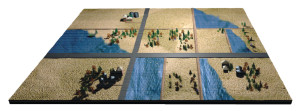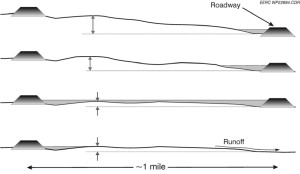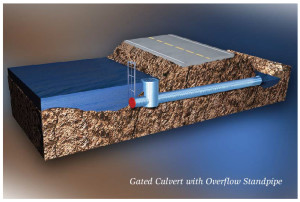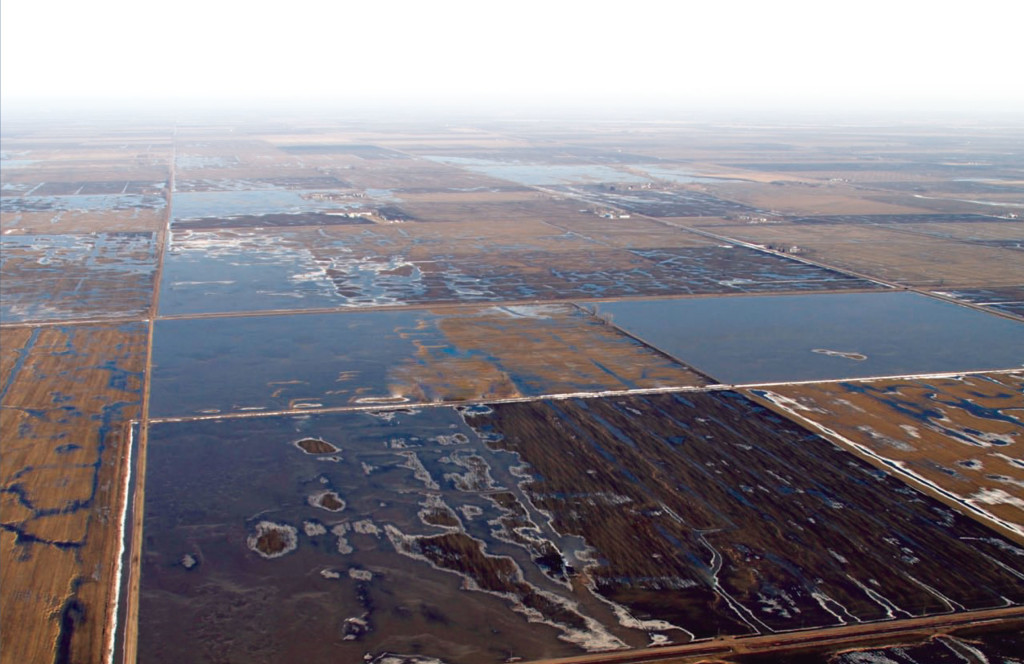
Click for Large View
The Diversion Authority constantly claims that there are no alternatives for the Fargo -Moorhead area plan. The Corps documents give a different story. The use of the EERC’s Waffle plan was rejected.
2.5.2 Effectiveness (View Excerpt)
According to EERC’s final report for the Waffle Project.
”The study found that flood stages in Fargo-Moorhead during the 1997 flood (nearly a 1-percent chance flood event) could have been reduced by 3.3 to 4.4 feet if the Waffle Project had been in place.”
The Corps document does not challenge the 3.3 to 4.4 foot reduction except to say
“This alternative would have a low level of effectiveness.”
The document does not say why 3-4 foot reduction has a “low level of effectiveness.”

Click for Large View
2.5.11 Recommendation (View Excerpt)
“Flood storage should no longer be considered as a stand-alone alternative for the Fargo-Moorhead area. The flood storage concept should be retained for possible implementation to mitigate for any adverse impacts of other plans or where it can be otherwise incrementally justified.”
“The local communities should continue to seek opportunities for storage in the basin.”
“The flood storage concept should be retained for possible implementation to mitigate for any adverse impacts of other plans”
These adverse impacts are staging (flooding out others).

Click for Large View
Fargo chose not to consider using the Waffle plan to reduce staging.
“The Waffle concept, as described in the report, does not fit any existing Corps of Engineers implementation authorities.“
So they cannot consider it as they cannot implement it themselves.
These are not reasons to reject the implementation of a combination plan of the Waffle plan, with higher in town flows, improved gate controls and off stream distributed storage. If these alternatives were used in a combination of measures we would be closer to reducing the flood risk for everybody.

available upstream of the Pembina river gage.
Click for Large View
Read Full EERC Waffle Concept Report (16.3mb Large Download)
Views: 230
Protecting Fargo from overland flood waters has turned into a competition of “feather in their cap” type projects for the corp and “lowest hanging fruit” projects for a couple local engineering firms (who have joined together so as not to have to bid against each other) and the local engineering firms are licking their chops to start on making millions for their part in the diversion debacle.
The waffle plan has nothing in it for the Corps and for some reason they get to make that as part of the reasoning on what plan is selected to go forward, this is not their charge. The waffle plan would not bring nearly as much money to the local engineering firms so its obvious why they push that plan to the side.
Flood protection for fargo has really been side tracked for all the wrong reasons. Common sense would tell you, probably a combination of several of several ideas working in concert is the real answer, one that can benefit the entire basin, not just fargo, and not at the expense of up or down stream citizens,towns, farmsteads, busniess, farm land, roads, churches, graveyards, etc etc.
In theory, the waffle plan could work; in an ideal world with rational people. In practice, it would be an absolute implementation and operational nightmare. Flood damages are all about timing of flows–like managing rush hour traffic. The waffle plan involves managing hundreds and hundreds of small (about a section in size) reservoirs where there are hundreds and hundreds of individual landowners. Given ND Water Commission experience in the Devils Lake Basin, the cost per acre-foot retained may also be quite high.
The comments of Mr. Leitch are appreciated. This is the discussions that did not take place in the formulation of the FM Diversion project. The point of the FM Dam commentary is that “Flood storage concepts” when used in combination were summarily dropped .
Now the proponents of the FM Diversion claim to have consider all alternatives. This claim is patently false.
The issue of “ideal world with rational people” is not in dispute. The rationale to flood others because you are in a natural flood prone area is only proof of this.
Mr. Leitch: I understand is that in a properly designed waffle plan, the water would be staged by using “chokes” in the culvets, delaying the drain/run off. They would be permanent “chokes” and would need no active adjusting or managing.